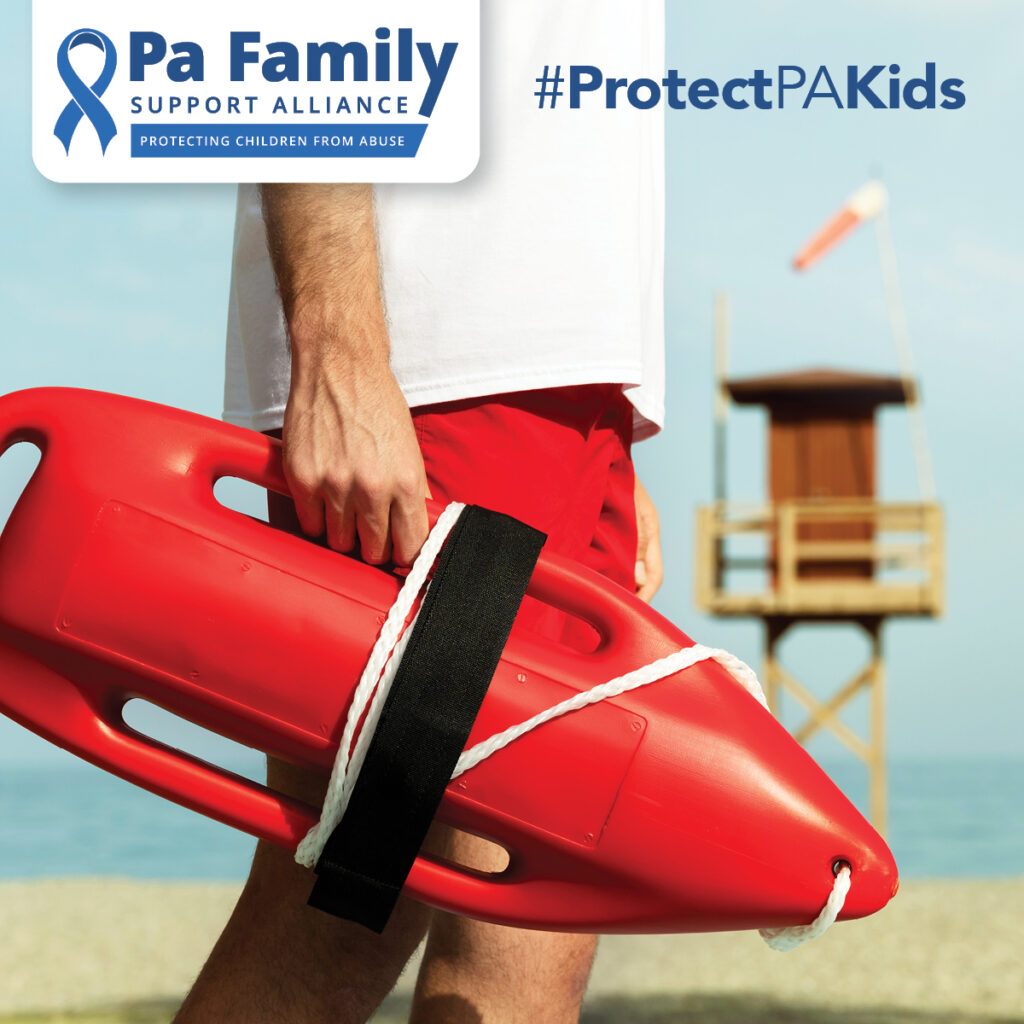Summer Water Safety Tips to #ProtectPAKids

Kids are having fun at pools, beaches, and lakes this summer. And while a dip in the pool or ocean is a lot of fun, drowning is the number one leading cause of death in children ages 1-4 and the second leading cause of unintentional death for children ages 5-14. In May, a toddler in Lancaster County drowned after wandering into a neighbor’s pool.
Child drownings are preventable. Parents and guardians must remember basic water safety rules and review any precautions with their children before taking a dip.
Water Safety & Awareness
Drownings can happen quickly, quietly, and unexpectedly. The American Red Cross reports that around 69% of children who drowned were not expected to be in or near water.
Follow these best practices for child safety and supervision around water:
- There should always be an adult watching the water when young children are within arm’s reach of it, even in the presence of a lifeguard. It is recommended to take 15-minute watch shifts with other trusted adults.
- If a child is missing, check the water first and keep a phone or electronic device close by to call for help.
- Ensure that all family members know how to swim. Water competency starts with being able to enter the water, get a breath, stay afloat, change position, swim a distance, and then get out of the water safely. In open water, like lakes and oceans, teach children about currents and undertows.
- Teach children to stay away from drains. Never enter a pool or spa with broken or missing drain covers. Children’s hair, jewelry, clothes, and limbs can get stuck in the openings and trap them underwater.
- Ensure that children wear proper water safety devices. Young or inexperienced children should wear U.S. Coast Guard-approved life jackets. Do not use arm floaties and inflatable rings as life jacket substitutes, and avoid blue, green, and non-brightly colored swimsuits.
Home Pool & Hot Tub Safety
For children under five, 87% of drowning fatalities happen in home pools or hot tubs, so it is important to create a safe swimming environment for your children in your own backyard.
The American Red Cross and the U.S. Consumer Product Safety Commission provide these tips on pool and hot tub safety:
- Secure your pool/hot tub with physical barriers. A fence of at least four feet in height should surround the area on all sides and should not be climbable by a child. The fence should include a self-closing, self-latching gate that is out of reach for the child.
- Remove, secure, or lock up steps, ladders, and any pool/hot tub entryways that could be used to access water without supervision. Children may climb outdoor furniture or toys to get into the water when an adult is absent.
- Install secondary barriers, such as alarms and covers. Ensure that covers are properly attached and that alarms are secured on doors from the home to the pool area.
- Enforce and review poolside rules with your children, such as no running, diving, or being near the water without an adult.
Swimming Skills & Resources
No matter what type of body of water a child may be in or near, it is crucial that they are able to swim in case of emergency. Enrolling your child in swimming lessons could save their life and help to prevent drowning.
You can easily educate yourself and the kids in your life about water safety through online resources. Check out your municipality’s local YMCA, USA Swimming chapter, or Parks and Recreation Department for free or reduced-cost lesson options. The American Red Cross also provides online water safety courses aimed at kids from kindergarten through 5th grade.
For more information on water safety, visit Poolsafely.gov. For access to video training, courses, and additional resources, visit Redcross.org.
Leave a Reply
You must be logged in to post a comment.
13 Comments